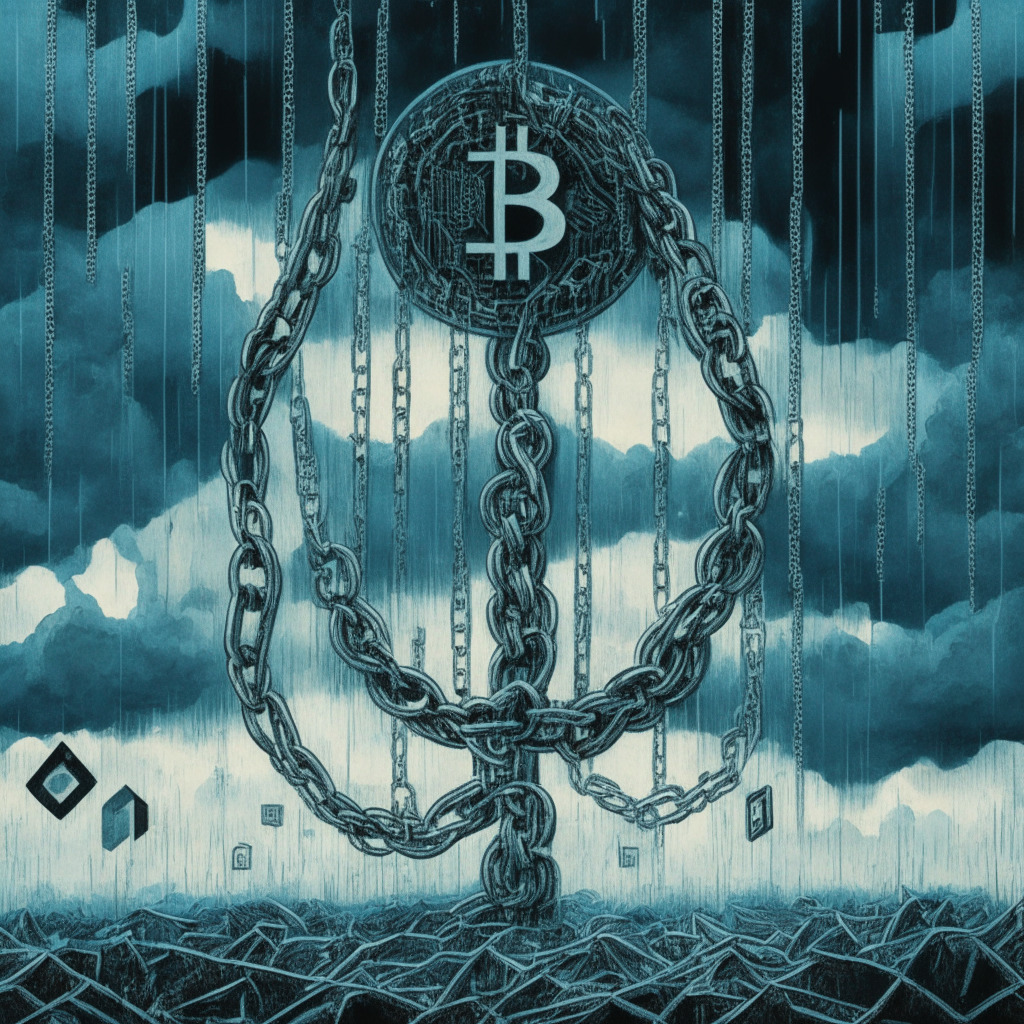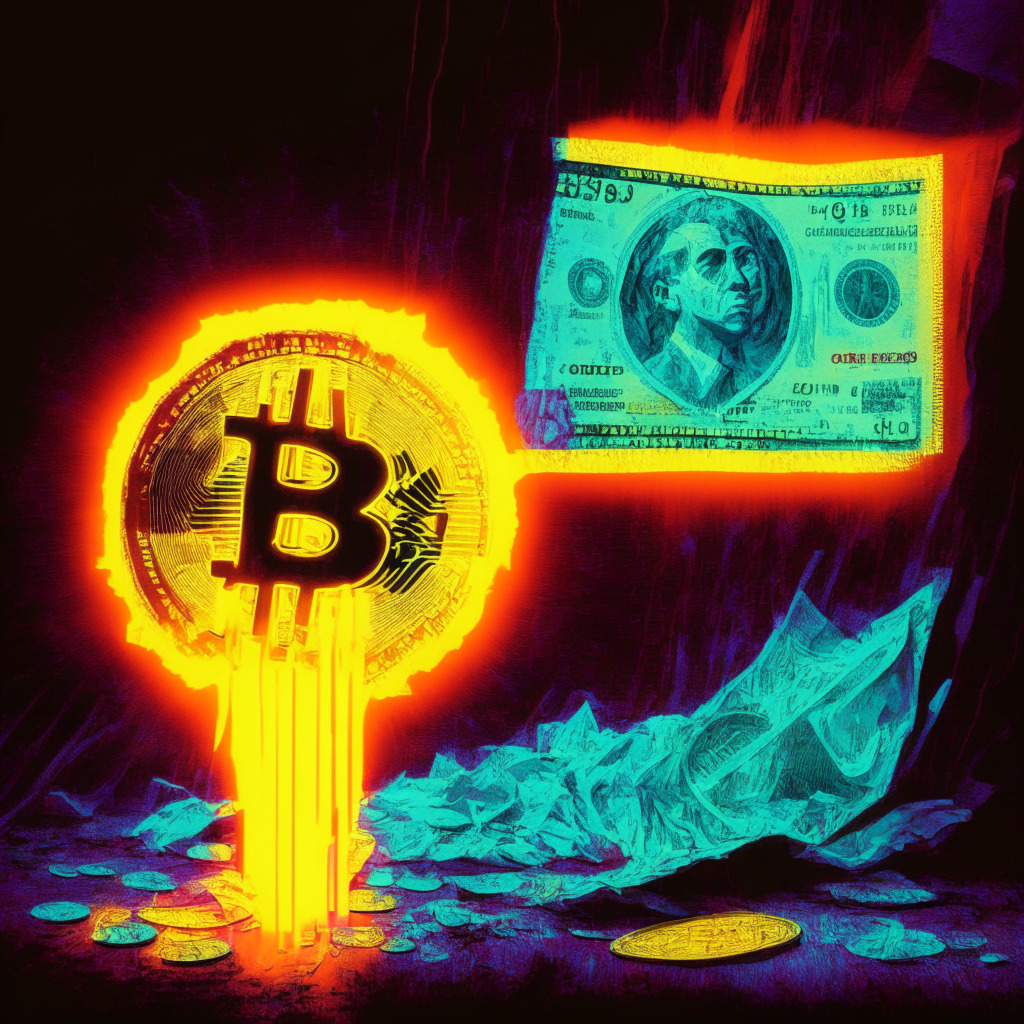“Brazil’s Central Bank recently introduced its central bank digital currency, Drex. However, concerns are raised by the currency’s potential for central authority interference, alongside questions about the movement of assets of popular cryptos following the collapse of Silvergate Bank. Advocates, meanwhile, hail the currency’s potential to improve Brazil’s banking sector.”
Search Results for: Trust Reserve
Binance’s Financial Conduct Amidst Unstable Conditions: A Closer Look into Crypto Exchange Transparency
“Binance’s USDC reserves dipped from $3.4 billion to a mere $23.9 million post Silvergate collapse, revealing a major conversion of reserves to BTC and ETH. In the wake of such drastic shifts, questions rise about transparency and safeguards for customer wealth in major crypto exchanges.”
Bitcoin’s Puzzling Standstill: A Precursor to Bull Run or Bear Crawl?
The crypto market shows a moderate increment with Bitcoin nearing the $30,000 mark, and Ethereum remaining stagnant. The forthcoming U.S July Consumer Price Index could serve as a catalyst, but concerns exist regarding potential bearish trends and the need for regulatory reforms. Recent developments include PayPal’s Ethereum-based stablecoin, an AI chatbot, and restoration of stolen funds.
PayPal’s Stablecoin Revolution: Evolving Crypto Landscape with Regulatory Safeguards
PayPal launches its own stablecoin, PYUSD, representing a pioneering move in bringing regulatory oversight and customer asset protection to the crypto world. The coin, developed with Paxos, is closely monitored by the New York Department of Financial Services to secure it against bankruptcy risks.
Binance’s Surprising Shift to Lesser-Known Stablecoins: Market Intrigue or Strategy Unfolded?
Coinbase CEO, Brian Armstrong, revealed that Binance traded a chunk of its USDC for another stablecoin. This reflects Binance’s increasing interest in newer stablecoins, despite market risks. With its turn towards the lesser-known FDUSD, Binance’s unusual decision indicates a notable trend within the crypto markets.
Huobi’s Regulatory Challenges: A deeper dive into the dynamics of control and decentralization
“Cryptocurrency exchanges like Huobi face challenges due to tightening regulatory control. While regulations could enhance market structure and investor protection, they might also stifle innovation. Amid scrutiny, Huobi maintains user trust, emphasizing the need for balancing legislative compliance and innovation freedom.”
Downplayed US Credit Rating: Cryptocurrency as a Potential Game-Changer in the Dollar-Dominated Debt Market
“This article discusses the potential disruption Bitcoin and cryptocurrencies could pose to traditional money systems; highlighting the influence of Bitcoin in strengthening citizens’ financial rights. Simultaneously, the rising popularity of central bank digital currencies (CBDCs) could trigger a massive financial transformation, pressuring the US to embrace these emerging monetary systems.”
Navigating the Bitcoin Paradox: Exploring Alternatives Amidst Market Uncertainties
“The crypto world remains largely unperturbed despite concerns about Bitcoin’s uncertainty and potential drops in value. The equity market’s upswing and potential changes in the Federal Reserve’s policy may strengthen Bitcoin’s prospects. Meanwhile, various crypto options including Trust Wallet, Wall Street Memes, Rocket Pool, Shibie, Immutable X, and XRP20 are creating investment interest and diversion from Bitcoin.”
Stablecoins Disrupting Financial System: Are They Really Riskier than Bank Deposits?
According to former Federal Reserve Board analyst, Brendan Malone, stablecoins are less risky than bank deposits and are not akin to money market funds. He argues that stablecoins, backed by fiat currencies and typically short-dated Treasuries, do not pose similar risks as banks due to the absence of mismatches between short-term liabilities and long-term assets. Regulating stablecoins similarly to traditional financial entities could, however, limit competition and increase market dominance.
The Inevitable Clash: Central Bank Digital Currencies Versus Private Banks
“Central bank digital currencies (CBDCs) aim to regain monetary control by utilizing the blockchain, posing a threat to private financial institutions. Amid this, 93% of central banks are conducting CBDC research, predicting 24 CBDCs in circulation by 2030.”
Crypto’s Legal Labyrinth: Analyzing Recent Litigations, Regulations and Their Impact on the Industry
The cryptocurrency community has been hit by various legal and regulatory changes recently, surrounding issues like fraudulent activities, securities violations, and money laundering investigations. These developments demonstrate the dynamic challenges faced when crypto technology interacts with traditional financial structures. For a robust future, it’s crucial that the pace of regulations matches the innovation in this field.
Navigating the Meme Coin Universe: Prospects, Pitfalls and Due Diligence in Cryptocurrency Investment
“The wider cryptocurrency market remains relatively flat, with Bitcoin and Ethereum holding steady. Investors are exploring the meme coin market space, filled with potential yet risk. New coins with potential substantial gains sometimes lack substantial utility or project vision. Presale projects often provide stability with near-term profit potential, such as BTC20. Crypto investments are high-risk, and the potential for loss is significant. Exploration and patience are key.”
Exploring the Era Lend Exploit: Urgent Lessons in Blockchain Security
“In the crypto world, security is paramount. Recently, lending app Era Lend on zkSync experienced a $3.4 million exploit due to a ‘read-only reentrancy’ bug. This exploit illustrates the need for advanced tools and strategies in bolstering blockchain security, highlighting the importance of extensive audit capabilities to prevent similar vulnerabilities.”
Worldcoin: The Hybrid of Blockchain and Biometrics Faces Upcoming Regulatory Scrutiny
UK’s data regulator intends to probe into OpenAI’s cryptocurrency initiative, Worldcoin, which merges blockchain with biometric identification. Amid its success, concerns surface over privacy and the robustness of its identity verification system. The project, which reaches a milestone of two million sign-ups, faces inevitable comprehensive investigations by regulators worldwide.
The Digital Ruble’s Accelerated Path: CBDC Advancements amidst International Intrigue
“Russia’s CBDC project, a centralized Digital Ruble, is projected for completion by 2025-2027. The Central Bank aims for the digital ruble to coexist with traditional cash, fostering a flexible transaction ecosystem. Despite potential losses, legislation outlines a framework for the digital ruble ecosystem that ensures high-level cybersecurity and reliability in a balanced, meticulously designed solution.”
Rise of Stablecoins: Will They Topple the US Dollar’s Dominance in the Digital Age?
“Jeremy Allaire, the CEO of Circle, warns of the risk to the US dollar’s status as the leading global reserve currency in the face of rising stablecoins. Allaire emphasizes the need to regulate stablecoins and develop trust in digital dollars, as cryptocurrency is poised to revolutionize the payment system, potentially saving a trillion-dollar economic toll from traditional financial system inefficiencies.”
Grayscale’s Battle Against SEC: Bitcoin ETF Approval on The Horizon?
The $19 billion Grayscale Bitcoin Trust’s (GBTC) discount to NAV has been thinning, prompted by BlackRock’s bold move to launch a US-based spot Bitcoin ETF. Consequently, GBTC’s discount plummeted from 50% to 26%, spurring a purchasing spree and encouraging speculation about a favorable environment for a Bitcoin-spot ETF. However, potential SEC regulation hurdles and litigation remain.
Unveiling the Future of Neobanking: Challenges and Opportunities in Crypto Adoption
In a recent interaction with Cryptonews, Nikolay Denisenko, the co-founder and CTO of Brighty app, emphasized the importance of a collaborative approach among crypto companies and regulators to overcome regulatory obstacles and tech limitations in transitioning to neobanking.
Exploring the Potential for CBDCs to Disrupt Dollar Dominance in Global Trade
“Central bank digital currencies (CBDCs), inspired by Bitcoin protocol, have the potential to shift global economic dynamics. Adoption by countries like Brazil, UAE, Russia, Singapore, and China, accounting for one-fourth of global output, could stimulate de-dollarization, altering U.S. capital markets and geopolitical relations. CBDCs could enable direct international trade settlements, impacting the dollar’s hegemony.”
Debate on Future of Crypto Regulations: Mark Cuban vs. SEC and the Confidence in Bitcoin’s Future
Mark Cuban and an ex-SEC official have weighed in on the future of cryptocurrency regulation amidst ongoing shifts in the industry. Cuban is critical of the SEC’s current approach, advocating for potential regulations including dedicated registration processes for cryptocurrencies. Contrastingly, ex-SEC official John Reed Stark criticizes Central Bank Digital Currencies for potential global financial risk, cybersecurity issues, and possible conflicts.
Navigating the Future: Exploring Central Bank Digital Currencies with Dilip Rao
“Former Ripple executive Dilip Rao, leading Australia’s exploration into Central Bank Digital Currencies (CBDCs), believes CBDCs might address future, unforeseen financial challenges. However, successful adoption relies on user-perceived value. This digital currency implementation in Australia could require popular support for changes to existing laws.”
Navigating the MiCA Crypto-Age: How EU Crypto Firms Can Brace For Compliance Overhaul
The upcoming Markets in Crypto-Assets (MiCA) legislation presents a significant transformation for crypto companies in the EU, bringing clarity to the regulatory framework. Firms must proactively engage with MiCA’s comprehensive crypto regulation and take steps towards effective compliance. This includes maintaining transparency and implementing rigorous Know Your Customer practices, to enhance credibility and promote industry growth.
Imminent $4.7 Billion Bitcoin Option Expiry: A Bullish Boost or Bearish Bane?
“The ongoing market uncertainties highlight potential impacts of the imminent $4.7 billion Bitcoin option expiry, possibly solidifying Bitcoin’s $30,000 price as long-term support. Conversely, regulatory obstacles, $128 million mining sell-pressure, and hints of additional rate hikes pose significant challenges for BTC traders.”
CeFi vs DeFi: Learning from Decentralized Practices for User Empowerment & Inclusivity
DeFi shines in user empowerment, transparency, and reach, setting high expectations for CeFi companies. To stay competitive, CeFi should foster financial inclusivity, prioritize transparency, adopt community-driven decision-making and interoperability, and emphasize user control over assets.
Crypto Market Surge: Impact of Bitcoin ETFs and Traditional Finance on Future Growth
The cryptocurrency market experienced a surge driven by excitement around possible Bitcoin spot ETFs from financial giants like BlackRock. Despite Bitcoin’s recent plateau and temporary dips, optimism amongst investors has grown, supported by Ethereum’s performance, DeFi, NFTs, and layer-two solutions. However, investors should remain cautious amid market volatility and risks.
Bitcoin and Ether Rally Amid Equities Decline: What Lies Ahead for Crypto and Stocks
Cryptocurrencies experienced a rally with Bitcoin and Ether rising 5% and 3% respectively, while equities faced losses. Investors are anticipating signs of interest rate changes from the Federal Reserve. The upward trend in Bitcoin’s price and increased institutional interest signal a potential shift in sentiment towards cryptocurrency’s longevity, although caution is advised due to market volatility.
IMF’s Vision for a Global CBDC System: Revolutionizing Cross-Border Payments
IMF’s Tobias Adrian proposes a global central bank digital currency (CBDC) system called “XC” platform, aiming to address issues such as high costs and slow processing in cross-border payments. Utilizing a trusted global ledger, the system enables efficient international transactions without introducing middleware cryptocurrencies, while automating contracts and maintaining central banks’ control over reserve allocation.
Binance Lightning Integration: Future of Crypto or Centralization Concern?
Binance’s move to incorporate Lightning nodes for Bitcoin transactions addresses network congestion issues and promises faster transaction times with minimal fees. Although the Lightning network offers improvements, concerns on scalability, security, and decentralization still persist in the crypto community.
IMF’s XC Platform: Revolutionizing Cross-Border Payments or Sparking Privacy Concerns?
The International Monetary Fund (IMF) introduced a new cross-border payment platform, offering a single ledger for central bank digital currency (CBDC) transactions, enhanced programmability, and improved information management. The XC platform aims to lower transaction fees and shorten processing times, potentially saving $45 billion in annual remittance fees. However, concerns over privacy and the need for CBDCs may impact its widespread adoption.
Crypto Outflows Slow Down: BlackRock ETF Impact and Resilient Altcoins
Investors pulled $5.1 million from digital asset funds last week, marking the ninth consecutive week of outflows. The BlackRock Bitcoin ETF bid may have brought stability to the market. Grayscale dominated weekly inflows, while Ethereum-tracking products experienced outflows. Investors show a mix of optimism and caution, closely monitoring regulatory developments.
Emerging Exchanges Thrive Post-FTX Collapse: Lessons in Adaptability & Transparency
The Nansen report reveals a surge in trading volumes for smaller exchanges like Kraken, Bybit, and Bitget following FTX’s collapse, while established exchanges faced losses. Amid regulatory crackdowns, decentralized exchanges (DEXs) remained stable, and a shift towards greater transparency is observed within the crypto industry. Adaptability and transparency are crucial for survival and growth in the fluid blockchain landscape.
Diving Into Tether’s Asset Management and Stablecoin Backing: New Insights and Unresolved Debates
The article highlights Tether’s funds distribution across multiple institutions and its reliance on commercial paper to back its stablecoin market cap. Documents from the New York Attorney General’s office offer insights into Tether’s asset storage locations, banking relationships, and asset management practices, amid ongoing concerns within the crypto community.































